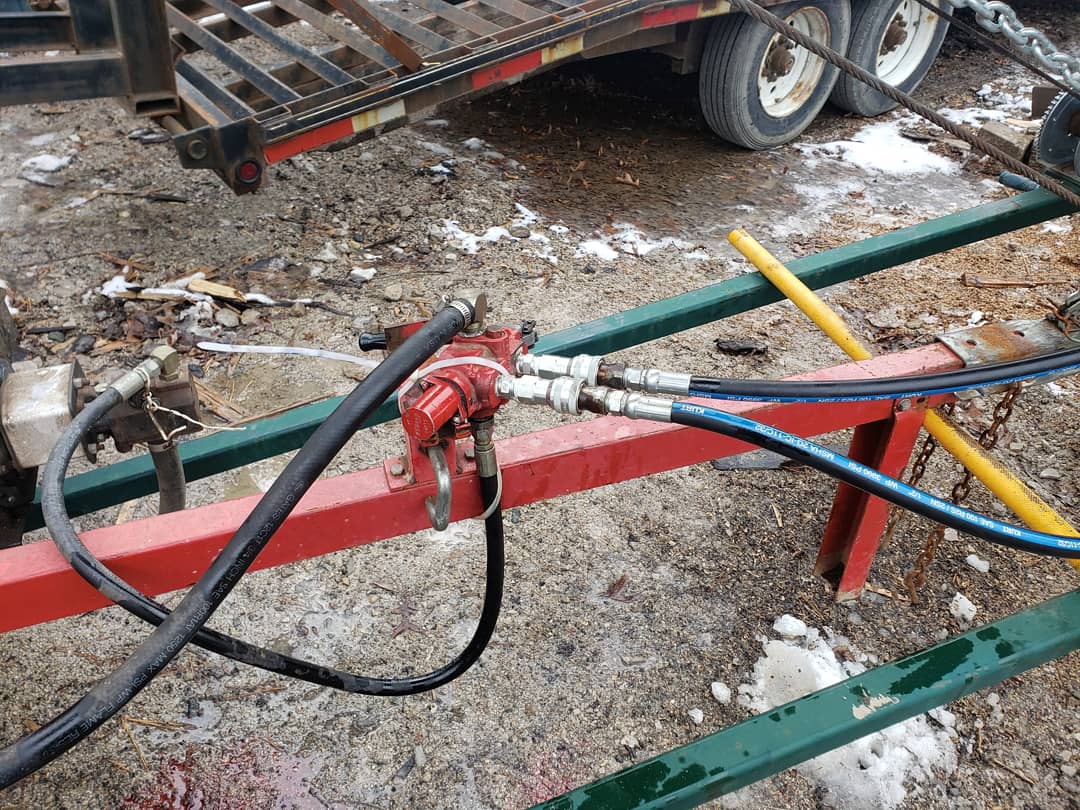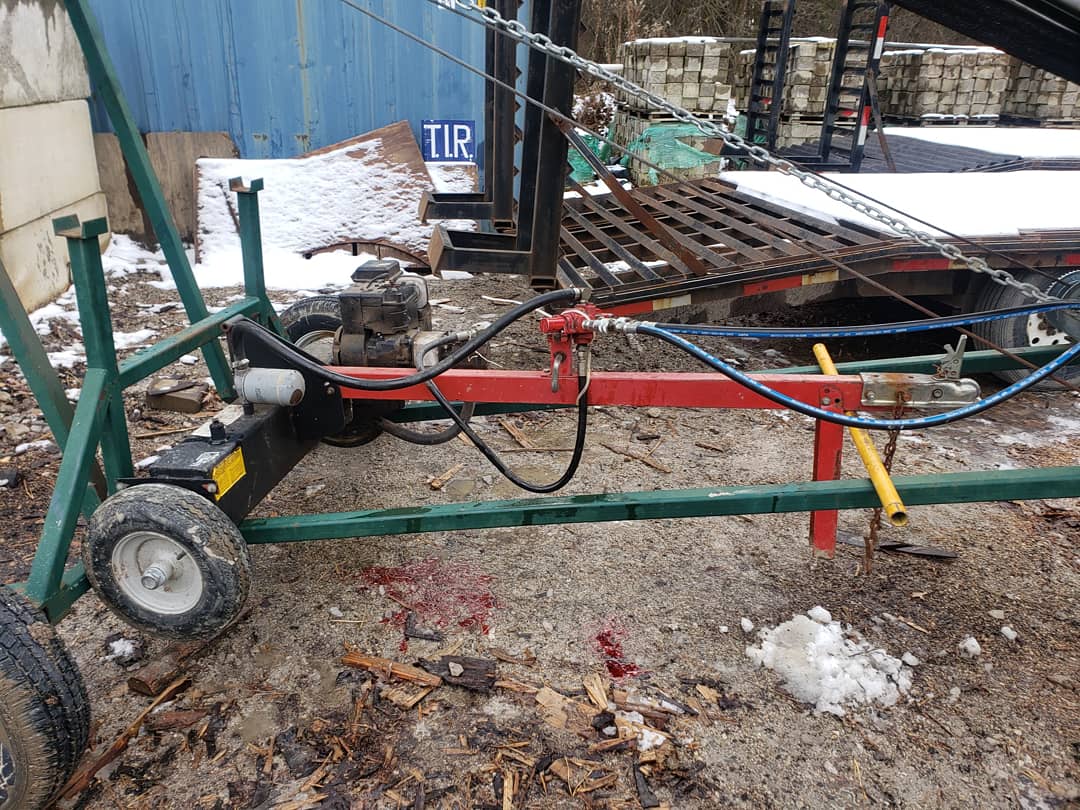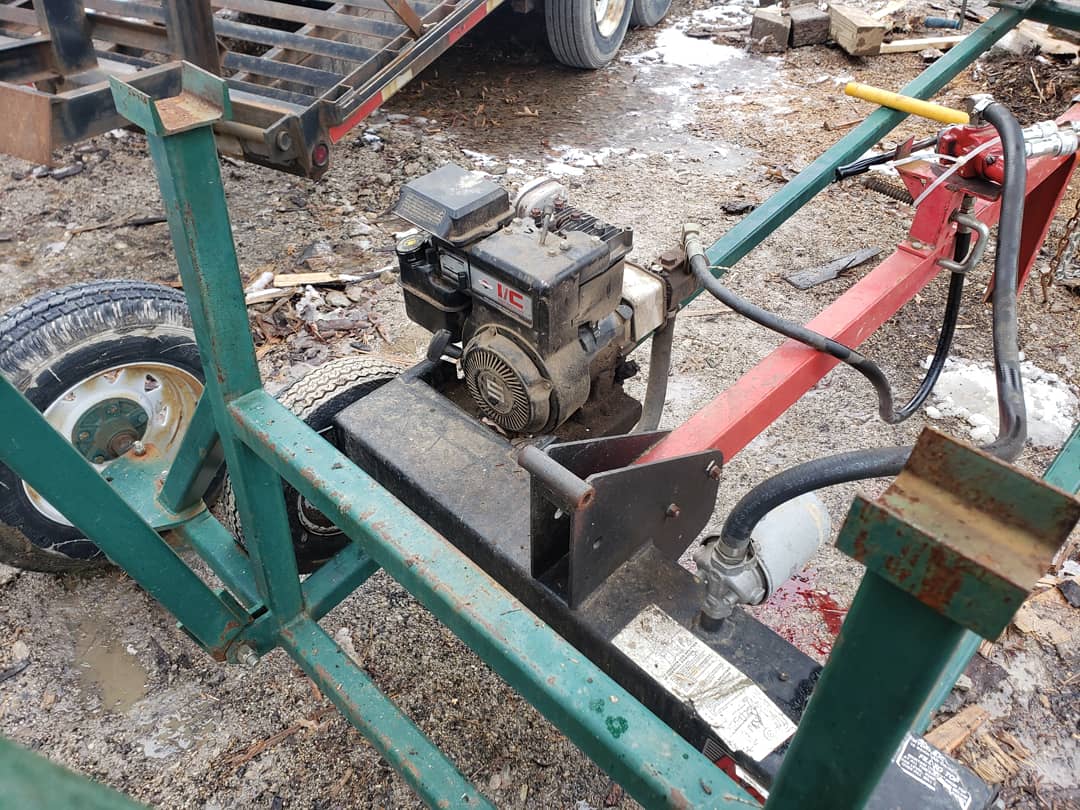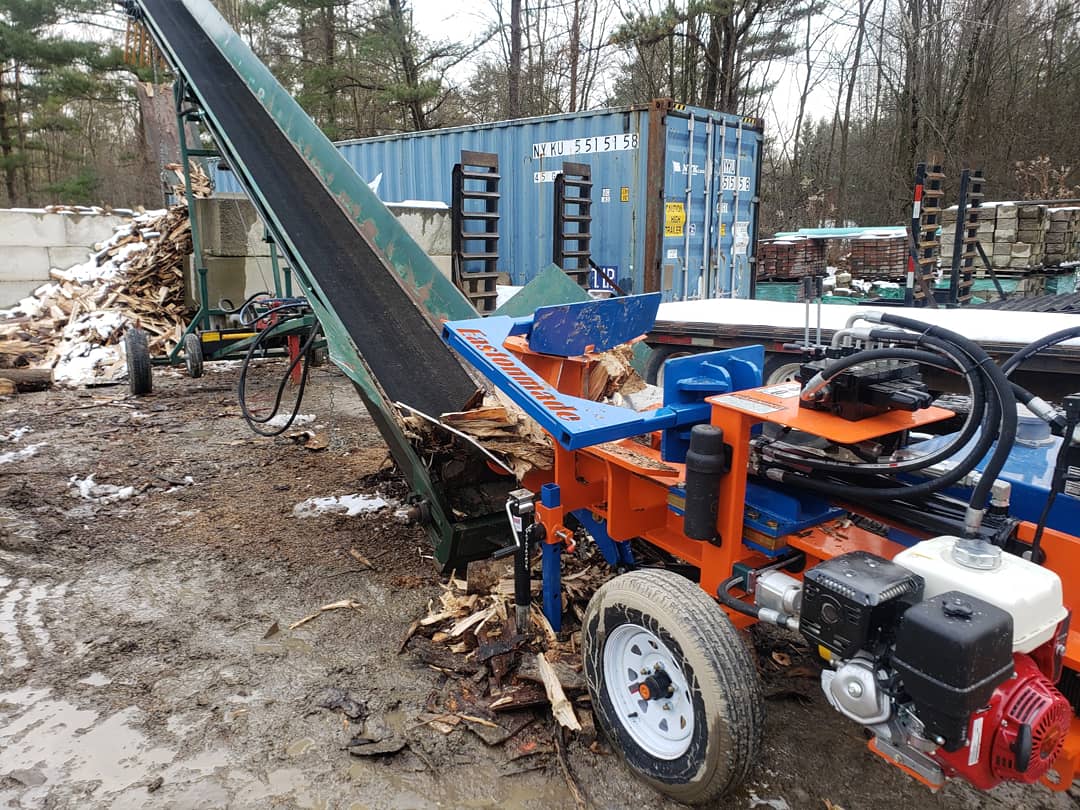This conveyor in the original configuration cranks up pretty high, as there are two mounting bracket choices for the hand crank. One is on the lower frame, the other above it on a cross member. In the photo of our older son towing the conveyor the hand crank is mounted on the upper bracket for towing with the quad. This position pivots the axle closer to the tow coupler, lightening the load on the quad axle. The flip side is that the conveyor is very high and very side to side top heavy for towing. If towing on the road the hand crank can be placed on the lower mount, although the conveyor must be supported when removing the hand crank to change the mounting position.
Having changed to a hydraulic lift mounted on the lower position has limited the maximum height. For my situation, loading PackFix drums, the hydraulic is helpful by allowing me to lower the conveyor when initially filling the drum to avoid damage to pallets from dropping firewood, and raising the conveyor as the drum approaches topping off.
Having used this 28' belted conveyor I would look for several things in a new conveyor.
One is hydraulic drive. If the belt or chain jambs, hydraulic oil flow will bypass and allow the belt or chain to stall without damage. Hydraulic flow also allows for top drum or sprocket drive which is preferable, pulling the load up vs pushing from the bottom.
Another thing is hydraulic lift. This should include a means of pinning in place to prevent drift down. My conveyor does not have this as it originally came with a hand crank adjustment. The engine bay should be somewhat level, protected, yet accessible for maintenance. Major pivot points should have grease zerks. The main pivot for elevating on my conveyor did not have these. After ten years of exposure to year round mid west weather this seized. Short of a porta band or torch there is no way to disassemble or service this long tube in tube pivot. I found this frustrating. When I suggested adding zerks to Built-Rite via phone, they replied it had never been an issue before, and seemed unappreciative of any corrective criticism (which I found odd at the time, and honestly pissed me off as the day I spent trying to break it loose seemed completely avoidable for the cost of adding a few zerks). Another consideration is is the unit your considering stable, both sideways and front to back. The front to back depends on how you use it. Ideally, in the upper most position it should be anchored to something, as heavy point loading shifts the teeter toddler balance point as it moves further up and away from the axle, which is how I damaged mine. Some options include wheels that swivel, allowing more pile stacking without moving the splitter or processor, or better load stacking in trucks or trailers without moving the vehicle. Seems like a very useful option especially for pile stacking. Aside from that, is service and parts.
I have had exceptional help from Navigator, with help for my piggyback forklift when needed. I can not say enough good stuff about them. The same with SuperSplit. I've emailed Eastonmade and Andrew responded the next day. I have had good service as well from Built-Rite getting a top drum shaft and lift cylinder sent out. However, I wanted to replace the idler wheels for the return portion of the belt. These are not serviceable (wt...) as the wheels are located on a shaft between welded on washers. The shaft, with three idler wheels, can easily be replaced, but there are seven of them at a cost of something like $85. ea. plus shipping of course. There are no bearings in them, just hard rubber wheels. I have switched their locations, as some are more loaded than others, but they are wobbling at the hub, very squeaky and wore out. Surplus Center has wheels but the hub size and overall diameter is an odd one. The wheels however, are from under a dollar to three or four dollars ea. with bearings. Another thing is the belt support strips heat up in the sun and bow considerably, humping the belt up in spots, and not supporting it in others (as shown in the photos). These are belt related items and most likely don't apply to chain conveyors.











































